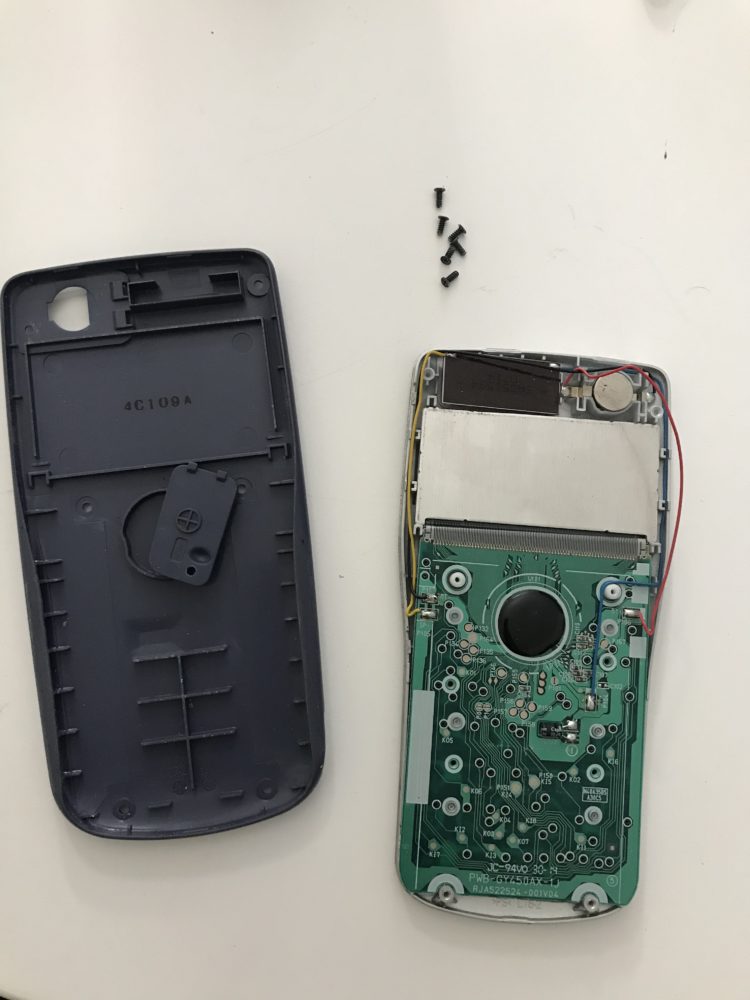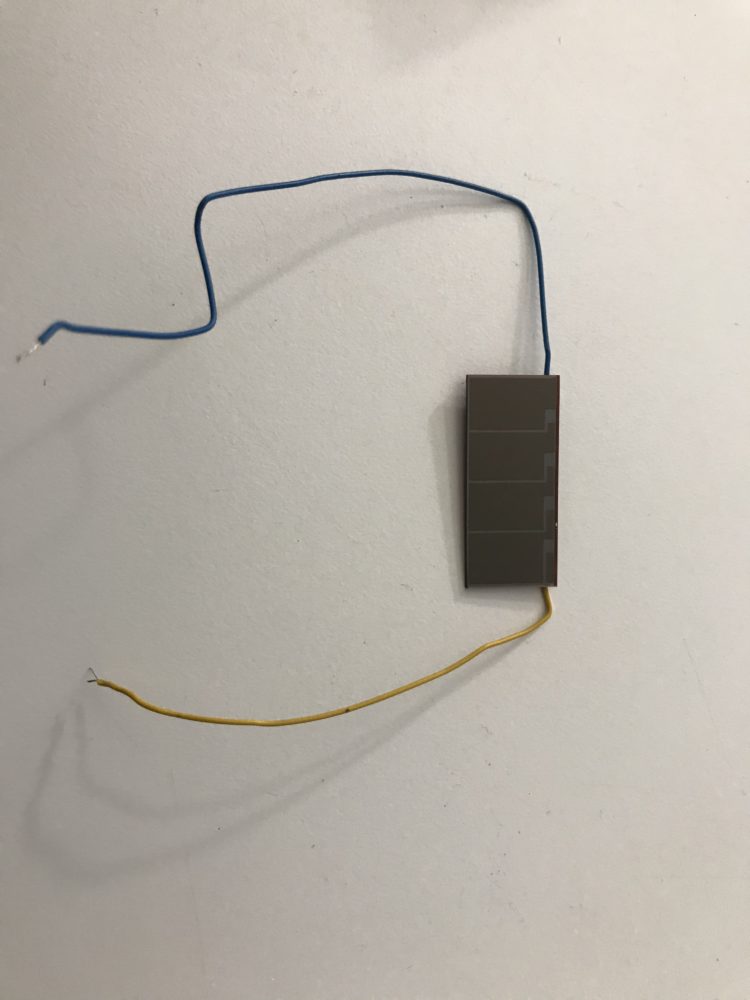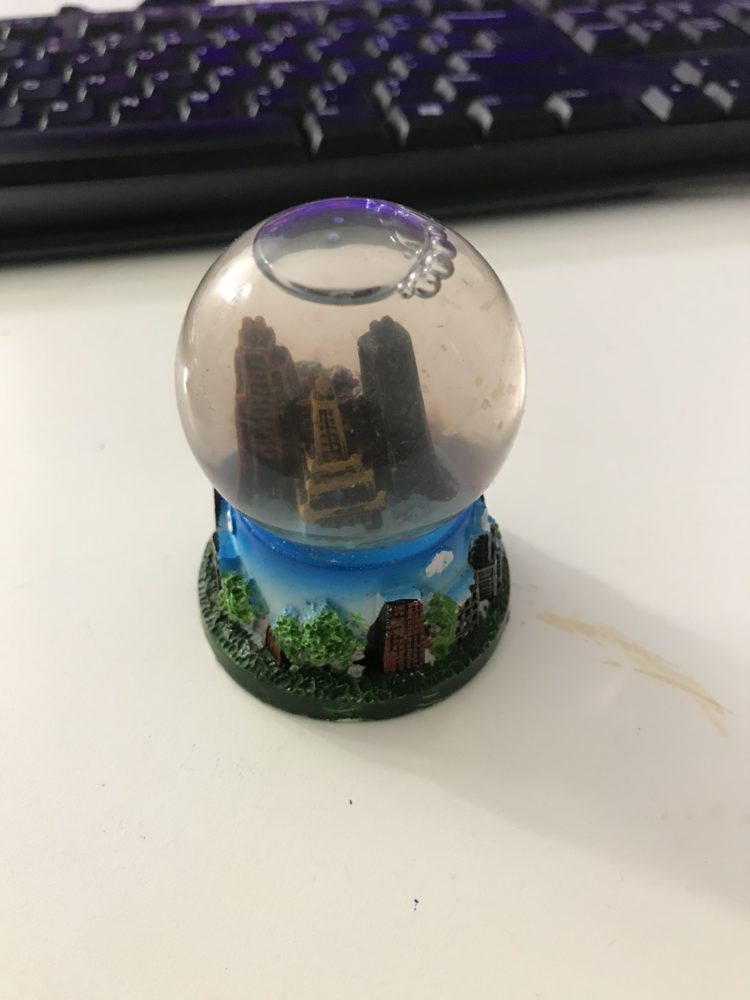At this point in the upcycling project, I was have disassembled my Casio calculators and taken out the solar panels. In order to test if the panels are in a working condition, I hooked them up on a Breadboard and connected them with standard red LED (1.7 to 2V) and blue LED(3 to 3.3V). Under direct flashlight, the LEDs lighted up close to their maximum brightness.


Since the panels are small and cannot provide enough potential to power high brightness LED it made sense to reduce the scale of my model aesthetic solar light fixture. With that idea in mind, I found an old souvenir crystal ball from Chicago which had become dirty on the inside. I easily disassembled it and cleaned it. My plan is to use this as my mini decorative light fixture with two different coloured LED lights inside that are powered by a small rechargeable battery which is charged using the solar panels.


Since I am not able to find the specs for these panels online and I don’t have a Multimeter my next step is to find out the maximum voltage from these panels using Arduino. This will help me spec out the right battery for the project. In safely charging a battery from a solar panel there are other components that are used as a battery protection circuit. But for the sake of this project, I will stick to a simple design using a diode, resistor, led and solar panels. The specs of the components will be shared in the final report.


2 Comments. Leave new
Hi Ankit,
This is such a cool idea for an upcycle project and I really like that you’ve already plugged the solar collectors into a breadboard to test their functionality outside of the calculator. As Ben said above, I’d highly recommend using an AD2 as a multimeter – I’d offer mine to lend if I weren’t already lending it to a friend who’s using it for system dynamics this semester. I’d reach out to your pod to see if anyone has one to lend, otherwise, I’d reach out to the whole class slack page.
Ankit,
This is probably the coolest design I have seen in this class so far. I like how you are incorporating engineering into this course as well as art. I would never have thought to use the calculators as solar panels. Not sure of you have an AD2 from system dynamics or other classes but I know that those have a built in multimeter function if you are still looking for one.